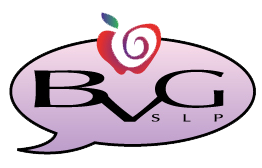This week we are going to be discussing the importance of building your students up! Increasing student confidence helps improve outcomes. All throughout the year it is absolutely imperative that we create a safe haven for our students. Our therapy rooms, be it face to face or virtual, need to be welcoming and inviting. Students need to feel comfortable in order to open up to us and work hard to achieve their goals.

If you know me as a therapist, you have heard me say, “I love to capitalize on my students’ strengths.” What exactly does that mean and how do you go about doing it? My philosophy is, and has always been, “yes you can!” The students that we serve are so often told, “no” or have heard all the things that they “can’t do”. We as their speech and language pathologists, need to make it a part of our jobs to hone in on what they can do. We need to truly identify what our students are good at. It should be our mission to determine what their strengths are and then use those talents to help guide them towards improving upon their weaknesses. The earlier we work towards improving our students’ confidence the better.
Establishing a Rapport
A large part of building student confidence involves establishing a rapport with your students. Our focus should be on creating a level of trust so that they genuinely begin to feel comfortable. Show your students that you are interested in THEM and what their likes and dislikes are. During the early stages of therapy as we complete welcome activities and ‘All About Me’ tasks, we need to be taking notes on each student. This is the time to informally analyze and assess their interactions with you and their peers to figure out what they are good at doing. If they are good at following directions, naming objects, or identifying colors, incorporate those things into their sessions to then target their specific goals.
Students love to feel good about themselves, as do everyone. Positive interactions involve allowing your students to demonstrate to you that they can be successful. Set them up to succeed and not to fail. Tailor your sessions around their strengths and present materials that target those strengths while still being able to address their goals. I want to provide you with a few examples of how I have successfully achieved this in my therapy sessions.
Building Student Confidence: Example #1
- If your student is good at counting and loves to count, give them an opportunity to count objects that they can then describe, sort, and/or create sentences about. I have had students who got very excited to show me how well they could count. I used this strength to my advantage (it’s not so much that they loved to count but rather they knew it was something they COULD do and they were good at it). The goals for this student were language based and involved expanding utterances. To give this student the opportunity to demonstrate the strength of counting during our sessions I created a resource tailored around that, it also incorporated an abundance of other language targets. It was a win-win because we were addressing the language goals and my student was becoming more and more confident in their responses. I praised them and got excited during every session. We still had multiple opportunities to work towards mastery of their goals. The resource was a More or Less Boom Card activity that includes a review of letters, numbers, and a wealth of target vocabulary.

Building Student Confidence (Mixed Groups): Example #2
- I haven’t met a student yet that doesn’t enjoy following directions activities. This is especially true when they can manipulate objects on a digital screen (iPad, computer, Smartboard, or teletherapy). Again, you want to set them up to be successful with this. Be sure to differentiate the activity so that it is at a level that coincides with their abilities. There are so many targets for both speech and language that can be addressed with digital following directions scenes.
- I intentionally include vivid picture scenes within my Following Directions Boom Cards, and they work very well with my mixed groups. Have your speech student identify pictures within the scene that have their target sound in them. Encourage them to produce the word multiple times before moving it to a designated area on the screen. Let them then ask their peer a question about the picture using clearly articulated speech. Your language student can then demonstrate their ability to answer the question using complete grammatically correct sentences. Allow the students in the group to take turns asking/answering questions about the picture scene as they proceed to follow directions. It is such a great tool for students to see their peers producing correct targets, this is one of the reasons why I really do appreciate mixed groups.
Building Student Confidence: Example #3
- If your student is good at naming objects or describing pictures, give them the opportunity to do this as you work toward higher level skills. I truly love literacy. By incorporating books into therapy sessions you can address a wealth of speech and language targets in a very meaningful way. This is where you can be very creative. Find books that include characters that your students are interested in and characters who look like them. Representation is extremely important, so please be cognizant of this as you make your book selections.
** Younger Students **
-
- For younger students, I use the inventory of their likes that I collect in the early weeks of therapy. This inventory helps guide me towards books that they would be interested in. I really like including a book series in my sessions. A series that offers repetition of characters, settings, and a similar plot are great. One of my favorites is, the Desmond and Clayton series by Steven Kroll (Biggest Pumpkin Ever, Biggest Snowman Ever, Biggest Valentine Ever, Biggest Easter Basket Ever). I have book companions for each of these books. The companions allow for us to spend a couple weeks describing, answering questions, using context clues, retelling, comparing/contrasting, and more. The gains that I see in my students from the fall to the spring with this series is very motivating. The books offer a level of repetition that truly encourages them to be successful. Their confidence improves as they begin to get a better understanding of exactly what story elements are. I then can assess carryover as we incorporate other books throughout the year. We are able to follow a systematic approach to asking specific story element questions. This approach leads to increased success because my students have grown accustomed to the style.
-
- I also love using my I Can Sequence Series because it really repeats the targets using different original short stories. Students practice answering questions, making predictions, using context clues. They can drag/drop the 4-5 step action sequence on screen which really keeps them engaged.
** Older Students **
-
- For my older students, I also utilize the inventory of their likes to find articles that draw upon their interests. Super Teacher Worksheets is a great place to find both fiction and non-fiction articles. The articles are specifically grouped by grade level and designed to include engaging topics that students enjoy. I generally give my students a choice of three articles to ensure that they feel involved in the learning process. As a freelance writer, I have written a couple of articles for Super Teacher Worksheets. It’s always exciting to see my students’ reaction when they realize that I authored the article that we are reading. This presents such an exciting opportunity to encourage my students. We talk about the importance of dreaming big and working hard to achieve their goals (both personal and academic)!
-
- Another great option for middle and high school students are Boom Cards that address Career Planning. This series provides multiple opportunities to address important concepts including comprehension, literacy, use of context clues, use of text evidence, and much more. It also helps to facilitate conversations about your students’ future plans. When using this series, I enjoy learning more about them. This is a time to have discussions about WHY/HOW they are going to achieve their career goals. There are open-ended digital graphic organizers included to help with them organize the planning process.
These are just a few examples of how we can capitalize on our students’ strengths. If we take a vested interest in lifting our students up during EVERY session, they are more inclined to work harder for us. The level of effort and overall motivation of your students has a significant impact on progress. It is up to us to ensure that we are using the time we spend with our students to show them what they can do!
If you are interested in any of the resources mentioned in this article, visit my store and search by title. Please keep your questions coming, I’m happy to help!
DISCLAIMER: Please note that the content of this and all previous/future blog posts are for informational purposes only. Be sure to abide by and follow your company’s policies and procedures. The information contained within are tips that have worked well for me in my therapy/teletherapy room.







Leave a Reply
Your email is safe with us.